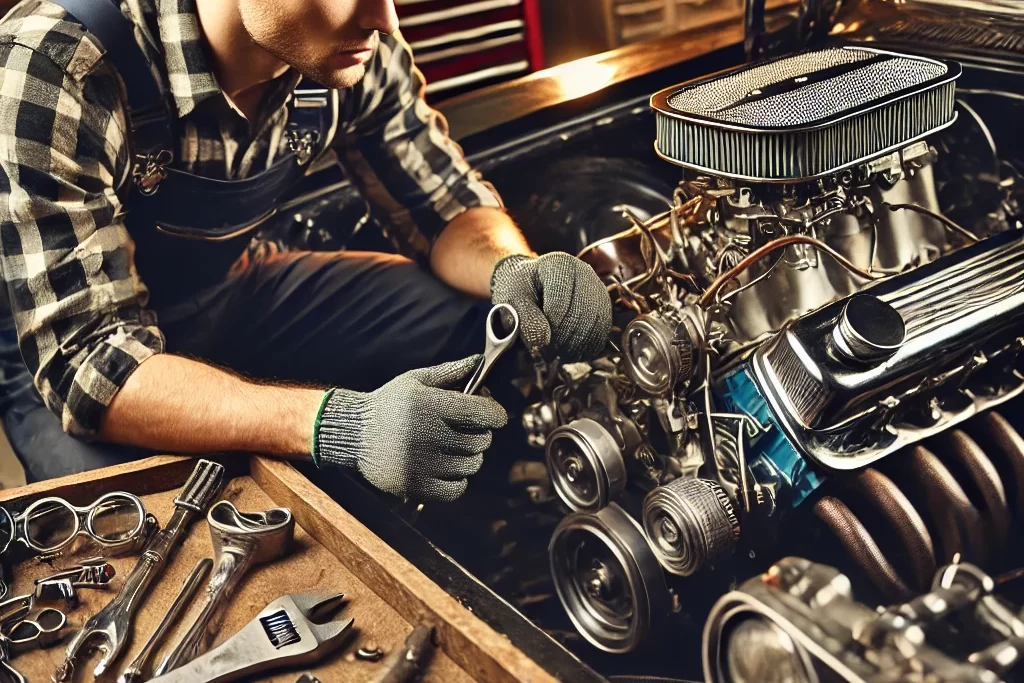Vintage cars are more than just modes of transportation; they are rolling pieces of history. Their designs, craftsmanship, and the memories they evoke are part of what makes them so cherished. But as time passes, the very heart of these vehicles, the engine, often becomes the most fragile part. When performance begins to falter, owners are left with a critical decision: should they rebuild the existing engine or replace it entirely with something new? Both options come with unique benefits and drawbacks, and making the right choice depends on how you view the balance between authenticity and practicality. This decision has become central to the culture of maintaining and restoring iconic vehicles.
The Case for Rebuilding the Original Engine
Rebuilding an original engine is often the preferred route for enthusiasts who want to keep the car as close to factory condition as possible. A rebuild involves taking the engine apart, inspecting and cleaning every component, replacing worn or damaged parts, and reassembling it to precise specifications. Done properly, it can bring the engine back to life with performance that rivals or even surpasses its original capability.
One of the main advantages of rebuilding is preserving the car’s authenticity. Collectors and purists usually place a premium on vehicles that retain their original engines. The value of a classic often drops if its motor is swapped out for something newer, no matter how powerful. Beyond value, there’s also a sense of pride in knowing the car is running on the same block that left the factory decades ago.
Cost can also make rebuilding attractive. While a full rebuild does require labor and specialized parts, it often costs less than sourcing and installing a brand-new engine. This makes it a practical choice for those who want to keep expenses under control without sacrificing long-term durability. A properly rebuilt engine, especially one using modern materials and techniques, can last for many years and offer better reliability than it did when new.
Why Some Owners Choose a New Engine
Despite the appeal of originality, not every vintage car owner wants to stick with the past. Installing a new engine opens the door to improved performance, reliability, and even fuel efficiency. For many, this makes their classic car more enjoyable and safer to drive regularly.
Modern engines are designed with advanced engineering, producing more horsepower while using less fuel. For drivers who want to take their vintage cars on long trips or use them in everyday situations, this kind of upgrade can transform the driving experience. A new engine can also be paired with other updated systems, like transmissions and suspension setups, creating what is commonly referred to as a “restomod” — a restoration with modern modifications.
Of course, fitting a new engine into a classic chassis is rarely simple. It requires technical expertise, careful modifications, and in some cases, custom fabrication. Transporting parts and coordinating the logistics of such a significant project often requires professional support, which is why many owners turn to trusted partners like https://jplogistics.net/ to ensure the process goes smoothly.
Value, Authenticity, and Collector Concerns
One of the major debates surrounding engine swaps is the impact on the car’s value. While a modern powertrain might make the car more practical, it can also strip away some of its historical authenticity. Collectors often want a “numbers-matching” vehicle, meaning the engine and transmission are original to the car. This detail can significantly affect resale value.
However, not every owner views their car as an investment. For many, the joy of driving outweighs concerns about future auctions or appraisals. If you plan to keep the car long-term, a new engine may be worth the trade-off. If you see the car as part of a collection, keeping its original engine might be more appropriate.
Technical and Legal Considerations
Before deciding to install a new engine, it is important to account for compatibility and legal requirements. Many vintage cars were not designed to handle the weight, size, or power output of a modern engine. Modifying the frame, mounts, or even the firewall might be necessary just to make everything fit.
Wiring also becomes more complicated. New engines rely on sensors, computers, and complex harnesses that must be integrated into a car that originally ran on simple mechanical systems. Beyond the garage, owners also need to pay attention to local regulations. Emissions and safety laws can limit what types of swaps are allowed, and in some regions, inspections are strict enough to halt a project before it hits the road.
Making the Right Decision
There is no single correct answer to the rebuild-or-replace question. The choice depends on how you plan to use your vehicle and what matters most to you. If authenticity, resale value, and tradition are your top priorities, a rebuild is almost always the best option. If you want performance, reliability, and modern convenience, a new engine might serve you better.
It is also possible to find a middle ground. Some owners choose to rebuild the original engine while making small upgrades with modern materials, creating a blend of authenticity and reliability. Others save the original motor and store it safely while enjoying their classic car with a modern engine under the hood. This way, the car can be restored to factory condition in the future if desired.
Vintage cars deserve to be celebrated and preserved, but they also deserve to be enjoyed. Whether you choose to breathe life back into the original engine or explore the possibilities of a modern replacement, the goal is always to keep these vehicles alive and on the road. What matters most is making a thoughtful decision that balances passion, practicality, and respect for the car’s legacy.
By carefully weighing your options, you ensure that your classic not only retains its charm but also continues to deliver the thrill of driving for years to come.
